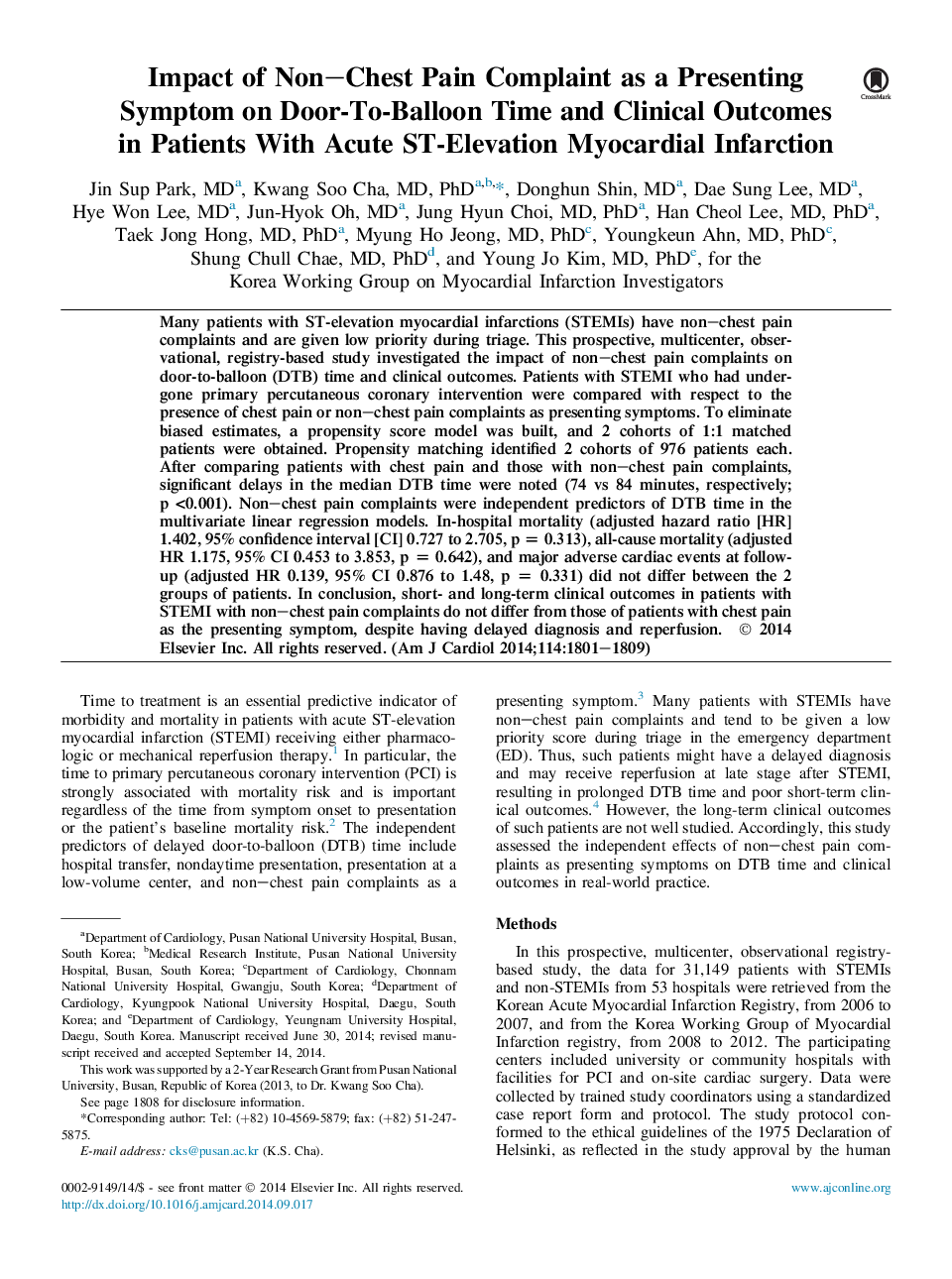| Article ID | Journal | Published Year | Pages | File Type |
|---|---|---|---|---|
| 2853769 | The American Journal of Cardiology | 2014 | 9 Pages |
Many patients with ST-elevation myocardial infarctions (STEMIs) have non–chest pain complaints and are given low priority during triage. This prospective, multicenter, observational, registry-based study investigated the impact of non–chest pain complaints on door-to-balloon (DTB) time and clinical outcomes. Patients with STEMI who had undergone primary percutaneous coronary intervention were compared with respect to the presence of chest pain or non–chest pain complaints as presenting symptoms. To eliminate biased estimates, a propensity score model was built, and 2 cohorts of 1:1 matched patients were obtained. Propensity matching identified 2 cohorts of 976 patients each. After comparing patients with chest pain and those with non–chest pain complaints, significant delays in the median DTB time were noted (74 vs 84 minutes, respectively; p <0.001). Non–chest pain complaints were independent predictors of DTB time in the multivariate linear regression models. In-hospital mortality (adjusted hazard ratio [HR] 1.402, 95% confidence interval [CI] 0.727 to 2.705, p = 0.313), all-cause mortality (adjusted HR 1.175, 95% CI 0.453 to 3.853, p = 0.642), and major adverse cardiac events at follow-up (adjusted HR 0.139, 95% CI 0.876 to 1.48, p = 0.331) did not differ between the 2 groups of patients. In conclusion, short- and long-term clinical outcomes in patients with STEMI with non–chest pain complaints do not differ from those of patients with chest pain as the presenting symptom, despite having delayed diagnosis and reperfusion.
